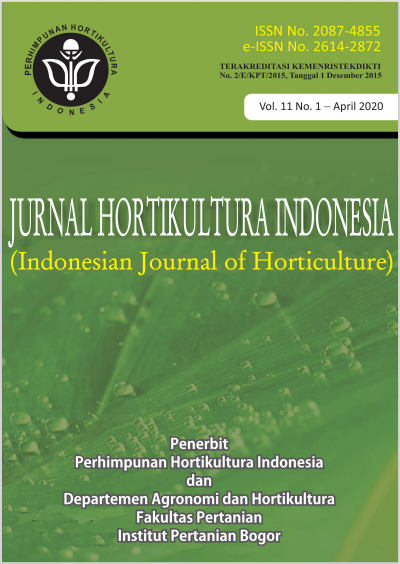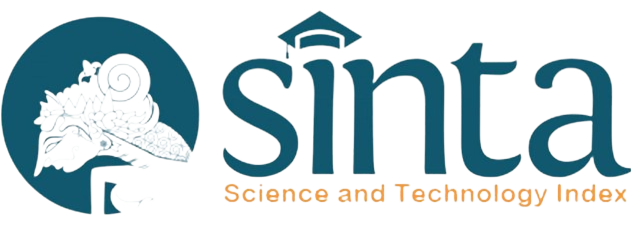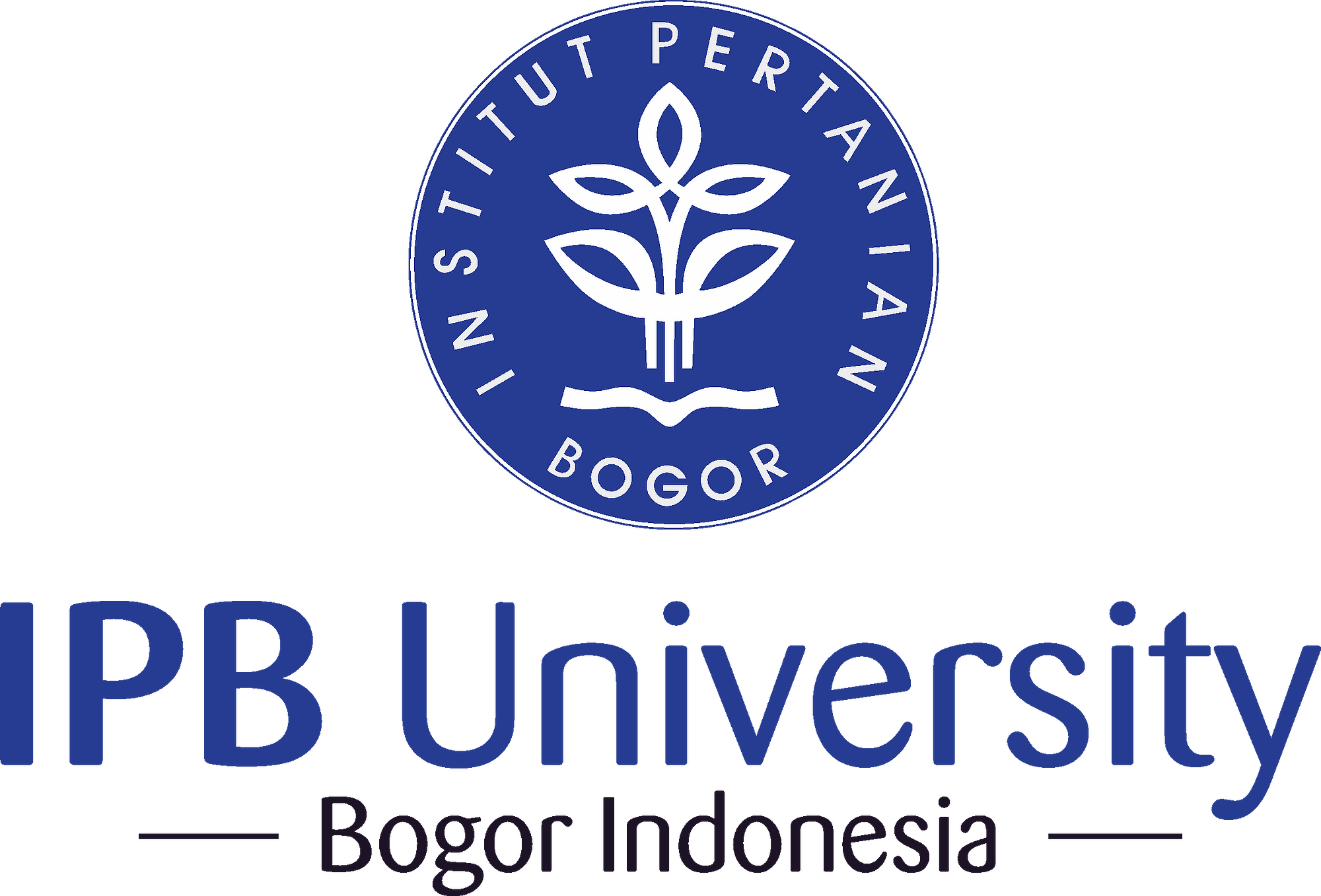Perubahan Morfofisiologi Bibit Manggis (Garcinia mangostana L.) terhadap Pemberian Polietilena Glikol (PEG)
Abstract
Mangosteen requires drought condition to induce flowering, however extending drought period might restrict the plant growth. Therefore, the response of mangosteen to drought stress needs to be studied. This research conducted on May to July 2017 using Randomized Block Design with one factor. The experiment comprised of 4 levels of polyethylene glycol (PEG 6000) treatment, i.e., PEG 0%, PEG 10% (-0.03 MPa), PEG 15% (-0.41 MPa) dan PEG 20% (-0.67 MPa) (m.v-1). The results showed that there is a dryness of the mangosteen leaves given PEG which occured slowly, starting from the edge of the leaves into the center of midrib. Water consumption was fluctuated until the end of experiment, which the highest was 33.33 ml per day in 0% PEG treated plant, then decreased until 10 ml per day in 20% PEG treated plant. Proline content increased from the first week to the third week after all PEG treatments. The highest proline content were found in 15% PEG (22.14 umol.g-1) and 20% PEG (23.46 umol.g-1) treated plants. Plant dry mass was low under water stress, and more severe stress resulted in more reduction of plant dry mass level. Water stress did not affect the N and Mg content significantly, but reduced P content in mangosteen seedling.
Keywords: evapotranspiration, nutrient content, proline, water stress













